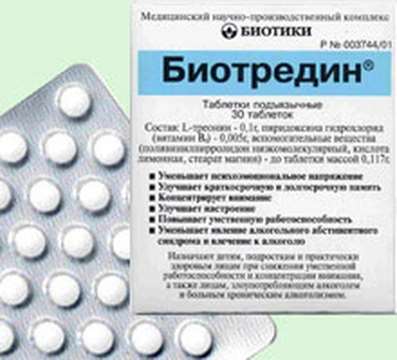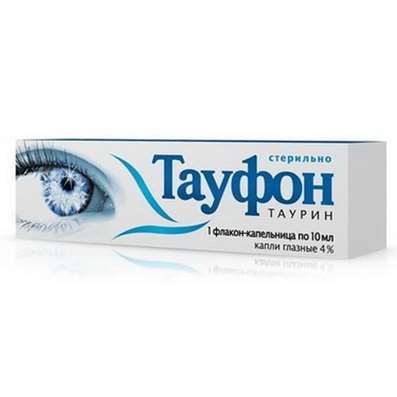Instruction for use: Exacyl
I want this, give me price
Dosage form: Solution for intravenous administration; Solution for oral administration; Coated tablets
Active substance: Acidum tranexamicum
ATX
B02AA02 Tranexamic acid
Pharmacological group:
Fibrinolysis inhibitors
The nosological classification (ICD-10)
D65-D69 Blood clotting disorders, purpura and other hemorrhagic conditions: Hyperfibrinolysis; Hypocoagulation; Increased vascular permeability; Hemorrhagic syndrome
K92.2 Gastrointestinal bleeding, unspecified: Gastrointestinal and intestinal bleeding; Acute bleeding from the upper gastrointestinal tract; Gastric bleeding; Gastrointestinal bleeding; Intraoperative abdominal bleeding; Intestinal bleeding; Bleeding in the upper part of the digestive tract; Bleeding gastrointestinal; Bleeding from the upper gastrointestinal tract; Bleeding from the digestive tract; Bleeding intraoperative abdominal; Recurrent bleeding in the digestive tract; Diagnosis of bleeding from the small intestine; Ulcer bleeding; Mallory-Weiss syndrome; Recurrent bleeding from peptic ulcers; Bleeding gastric
N93 Other abnormal bleeding from the uterus and vagina: Atonic uterine bleeding; Prolonged menstruation; Blood loss during menstruation; Bleeding from the genitourinary system; Bleeding uterine dysfunctional; Bleeding from the genital tract of organic etiology; Uterine bleeding; Menorrhagia with fibroids; Functional uterine bleeding; Abnormal bleeding from the genitals in women
R04.0 Epistaxis: Nasal bleeding; Nasal bleeding; Epistaxis
R58 Bleeding, not elsewhere classified: Abdominal apoplexy; Hemorrhagia; Haemorrhage of the esophagus; Hemorrhage; Generalized bleeding; Diffuse bleeding; Diffuse bleeding; Prolonged bleeding; Blood loss; Blood loss during surgical interventions; Bleeding during surgery and in the postoperative period; Bleeding during labor; Bleeding and haemorrhage in hemophilia B; Bleeding from the gums; Bleeding intraoperative abdominal; Bleeding against a background of coumarin anticoagulants; Hepatic hepatitis; Bleeding in hemophilia A; Bleeding at hemophilia A; Bleeding with inhibitory forms of hemophilia A and B; Bleeding due to leukemia; Bleeding in patients with leukemia; Bleeding; Bleeding due to portal hypertension; Bleeding due to hyperfibrinolysis; Drug bleeding; Local bleeding; Local bleeding due to activation of fibrinolysis; Massive blood loss; Acute blood loss; Parenchymal hemorrhage; Hepatic bleeding; Postoperative hemorrhage; Kidney bleeding; Vascular-platelet hemostasis; Traumatic bleeding; Threatening bleeding; Chronic blood loss
T81.0 Bleeding and hematoma complicating the procedure, not elsewhere classified: Bleeding in the postoperative period; Bleeding during transfusion; Bleeding during operations on the brain; Bleeding during surgical interventions; Bleeding after colorectal interventions; Bleeding after prostatectomy; Bleeding during surgery and in the postoperative period; Bleeding due to surgery on the prostate and urinary tract
Z100 * CLASS XXII Surgical practice: Abdominal surgery; adenomectomy; Amputation; Coronary angioplasty; Angioplasty of the carotid arteries; Antiseptic skin treatment for wounds; Antiseptic Hand; Appendectomy; atherectomy; Balloon coronary angioplasty; Vaginal hysterectomy; The coronary bypass; Interventions in the vagina and cervix; Interventions on the bladder; Intervention in the mouth; Restoration and reconstructive surgery; Hand hygiene of medical personnel; Gynecologic surgery; Gynecological intervention; Gynecological surgery; Hypovolemic shock during operations; Disinfection of purulent wounds; Disinfection of wounds edges; Diagnostic intervention; Diagnostic procedures; Cervical Diathermocoagulation; Long-surgery; Replacing the fistula catheters; Infection in orthopedic surgery; Artificial heart valve; cystectomy; Short-term outpatient surgery; Short-term operation; Short surgical procedures; Krikotireotomiya; Blood loss during surgery; Bleeding during surgery and in the postoperative period; Kuldotsentez; laser photocoagulation; laser coagulation; retinal laser coagulation; Laparoscopy; Laparoscopy in Gynecology; CSF fistula; Small gynecological operations; Small surgical procedures; Mastectomy and subsequent plastic; mediastinotomy; Microsurgical operations on the ear; Mukogingivalnye operation; suturing; Minor surgery; neurosurgical operation; Immobilization of the eyeball in ophthalmic surgery; testectomy; pancreatectomy; Perikardektomiya; The period of rehabilitation after surgery; The period of convalescence after surgery; Percutaneous transluminal coronary angioplasty; Pleural thoracentesis; Pneumonia postoperative and posttraumatic; Preparation for surgical procedures; Preparation for surgery; Preparation of the surgeon's hands before surgery; Preparation of the colon for surgical procedures; Postoperative aspiration pneumonia in neurosurgical and thoracic surgery; Postoperative nausea; Postoperative bleeding; postoperative granuloma; postoperative shock; The early postoperative period; myocardial revascularization; Radiectomy; gastric Resection; bowel resection; uterine Resection; liver Resection; enterectomy; Resection of part of the stomach; Reocclusion of the operated vessel; Bonding tissues during surgical procedures; Removal of sutures; Condition after eye surgery; Condition after surgery; Condition after surgery in the nasal cavity; Condition after gastrectomy; Status after resection of the small intestine; Condition after tonsillectomy; Condition after removal of the duodenum; Condition after phlebectomy; Vascular surgery; Splenectomy; Sterilization of surgical instruments; Sterilization of surgical instruments; sternotomy; Dental surgery; Dental intervention in periodontal tissues; strumectomy; Tonsillectomy; Thoracic surgery; Thoracic surgery; total gastrectomy; Transdermal intravascular coronary angioplasty; Transurethral resection; Turbinektomiya; Removal of a tooth; cataract surgery; Removal of cysts; tonsillectomy; Removal of fibroids; Removing the mobile primary teeth; Removing polyps; Removing broken tooth; Removal of the uterus body; Removal of sutures; Fistula likvoroprovodyaschih ways; Frontoetmoidogaymorotomiya; Surgical infection; Surgical treatment of chronic limb ulcers; Surgery; The surgery in the anal area; The surgery on the colon; Surgical practice; The surgical procedure; Surgical interventions; Surgery on the gastrointestinal tract; Surgical procedures on the urinary tract; Surgical procedures on the urinary system; Surgical intervention of the genitourinary system; Surgical procedures on the heart; Surgical manipulation; surgery; Surgery on the veins; Surgical intervention; Vascular surgery; Surgical treatment of thrombosis; Surgery; cholecystectomy; Partial gastric resection; hysterectomy; Percutaneous transluminal coronary angioplasty; Percutaneous transluminal angioplasty; Coronary artery bypass; tooth Extirpation; Extirpation of milk teeth; pulpectomy; pulsative cardiopulmonary bypass; tooth Extraction; teeth Extraction; cataract extraction; Electrocoagulation; endourological intervention; episiotomy; Etmoidotomiya; Complications after tooth extraction
Composition and release form
1 tablet coated, contains tranexamic acid 250 or 500 mg; In the package 20 pcs.
1 ampoule with 5 ml solution for injection - 500 mg; In the package 5 pcs.
1 ampoule with 10 ml solution for oral administration - 1 g; In the package 5 pcs.
Pharmachologic effect
Mode of action - Hemostatic.
Inhibits fibrinolysis.
Indications of the Exacyl
Bleeding associated with the activation of fibrinolysis (including in the treatment of fibrinolytics), menorrhagia and metrorrhagia, gastrointestinal bleeding, hematuria from the lower part of the urinary system (prostate adenoma, malignant tumors of the bladder and prostate, kidney stones); Bleeding as a result of surgical intervention on the prostate gland and urinary tract, postoperative otorhinolaryngological hemorrhages.
Contraindications
Thrombosis, severe renal failure.
Application of pregnancy and breastfeeding
Not recommended.
Side effects
Nausea, vomiting, dizziness, skin lesions.
Interaction
Incompatible with urokinase, some hypertensive drugs (noradrenaline bitartrate, deoxyxypinephrine hydrochloride, metarmine bitartrate), benzylpenicillin, tetracyclines, dipyridamole, diazepam.
Dosing and Administration
Inside and IV - 2-4 g / day in 2-3 hours; Children - at a rate of 20 mg / kg / day.
Precautionary measures
In the case of renal failure, the dose is reduced (taking into account Cl creatinine). It should be borne in mind that with hematuria of renal genesis, the risk of mechanical anuria increases as a result of the formation of a clot in the urethra.
Storage conditions of the drug Exacyl
At room temperature.
Keep out of the reach of children.
Shelf life of Exacyl
5 years.
Do not use after the expiry date printed on the package.

 Cart
Cart





